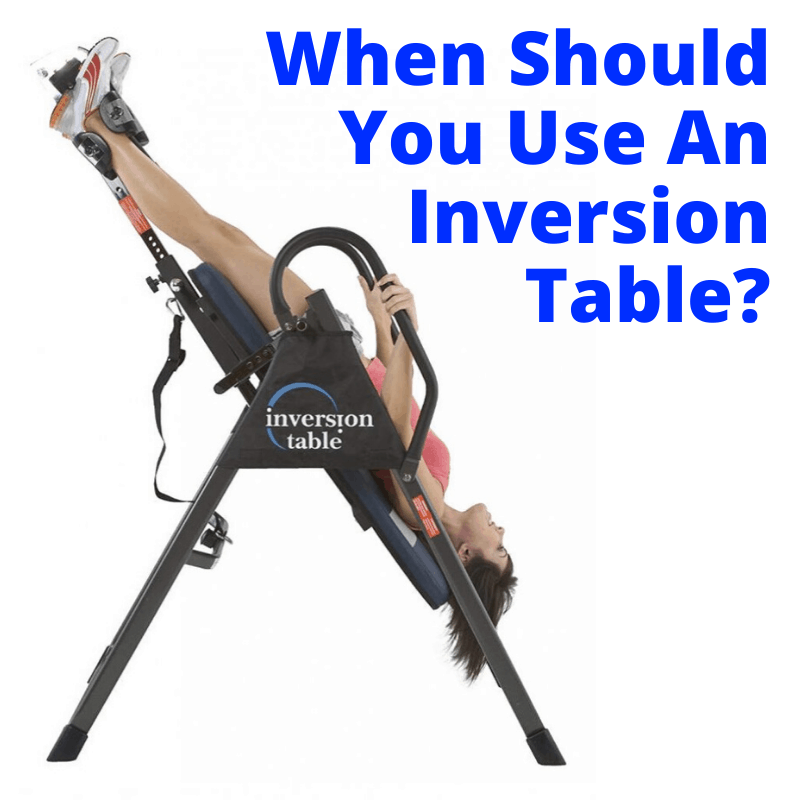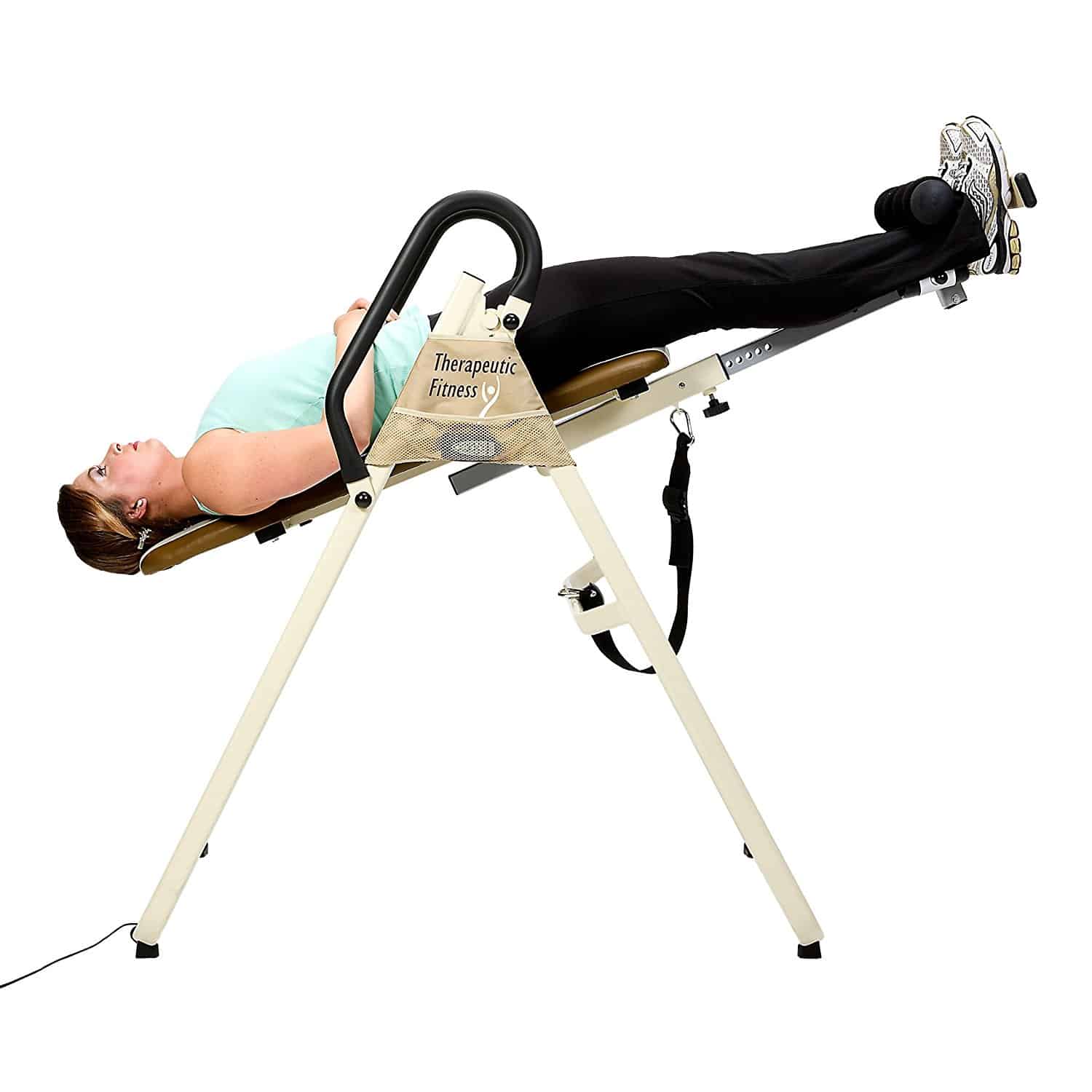
The great thing about the therapy is that you can enjoy the benefits from the comfort of your own home by using an inversion table.
However, it isn’t as simple as just buying an inversion table and hanging upside down for a couple of minutes.
Just like most health practices, there are a few different ways to incorporate inversion therapy into your routine.
In this article, we will cover different techniques and guidelines to help you get the very most out of inversion table therapy.
What is Inversion Therapy?
Inversion is the practice of putting yourself in a position where your head is below your feet. Inversion therapy can be traced all the way back to 400BC, where Hippocrates, the father of modern medicine, used ladders and ropes to hoist his patients into position.
There has even been evidence of inversion found further back than that. With drawings being found of people using inverted yoga-like positions in ancient civilizations.
As you can see, inversion therapy has definitely stood the test of time.
The reason for inverting is to undo some of the negative effects that gravity can have on your body over time.
Gravity is constantly pulling down on you. This compresses your spine, puts pressure on your joints, restricts blood flow and can cause tense muscles.
Inversion therapy counteracts these issues and has many other benefits beside them.
How To Invert?
There are a few ways to get yourself into an inverted position.
There are certain yoga positions, such as the dolphin, that use an inverted position. You can also use gravity boots, which attach to a pull up bar and have you hanging upside down, completely vertically.
We recommend the use of an inversion table. They are very easy to set up, anybody can get hold of one and you have more control over the inversion angle than you do with the other methods.
You can find a rundown of the best inversion tables here.
Before beginning inversion therapy, you should seek the advice of your GP or healthcare professional. Individuals with heart disease, high blood pressure, eye diseases like glaucoma and pregnant women are not recommended to undergo inversion therapy.
To invert properly and safely, here are a few guidelines and tips for you:
- Ensure the table is secure, stable and on a flat surface.
- Wear appropriate clothing that isn’t likely to get caught in any moving parts on the table.
- Have somebody with you if it’s your first time trying inversion. They can help out if you have any difficulties.
- Adjust your table so that it fully supports your head and neck.
- Set the angle of the table, using the lowest possible angle for your first try. You can increase the inversion angle as you get used to the position.
- Make sure your feet are fully secured using the built-in ankle supports, so you don’t end up asking why the “inversion table hurts my ankles“.
- Slowly invert yourself with the handles. Start slow. You may even want to stop in the horizontal position for a minute or two, in order for your blood flow to settle before you let your feet come above head height.
- Outstretch your arms above your head to lengthen your spine to its fullest and provide better decompression.
- Take deep breaths and relax in the inverted position for a few minutes at a time, to begin with.
How Often Should You Use An Inversion Table?
Inversion therapy is definitely a practice where more frequent sessions lead to better results.
If you are able to, using the table multiple times during the course of a day will yield greater and longer lasting benefits.
To get into the habit of using your table, starting with a session in the morning, one during the day and one before bed is a very good way to begin.
If you are looking for back pain relief, the question of “how often should I use an inversion table” has a simple answer: you can use it anytime your symptoms appear.
In the beginning, you might find that the positive effects wear off shortly after you get off of the table. Over time, the results will last longer with more frequent sessions.
It takes time for your body to adapt and repair. The best advice we can give is for you to be patient and consistent with the therapy.
How Long Should You Be On An Inversion Table?
To start with, short amounts of time for multiple sessions is the best way to go. Frequency is more important than length of time when it comes to inversion therapy.
Of course, you will see more results if you can spend longer on the table and still maintain a frequent number of sessions. Therefore, it is a good idea to slowly increase the time of each inversion session as you begin to feel more comfortable with it.
Gradually build up to session lengths of around ten minutes, possibly up to twenty if you can manage it.
Summary
Inversion table therapy is extremely accessible. The availability of inversion tables means that anybody can reap the benefits of it.
However, it should be treated just like any other health and fitness endeavor. Start slow and build up as your body adapts.
Frequent sessions throughout each day of just a couple of minutes, at a low angle, are a great way to begin.
Increase the duration and inversion angle over time when you become more comfortable with the inverted position.
Most importantly, be consistent. Make inverting a part of your daily routine and prioritize it like you would with exercise or healthy eating.
But do not use inversion therapy when recovering from surgery like a hip replacement, unless your doctor specifically says it is ok.
Do this and you will soon be reaping the many rewards of inversion table therapy.
P.S.- We have a review of the best inversion tables on the market here if you’re considering getting one.

Leave a Reply